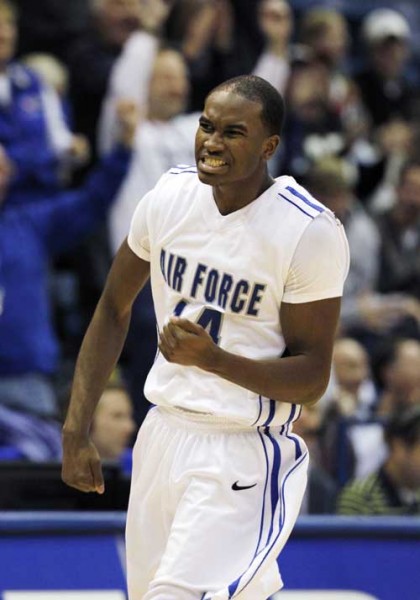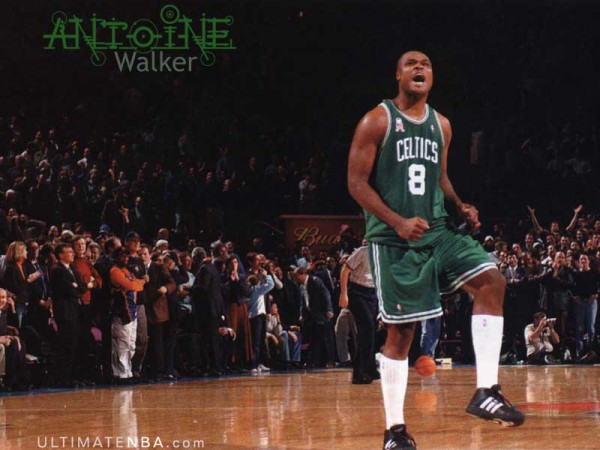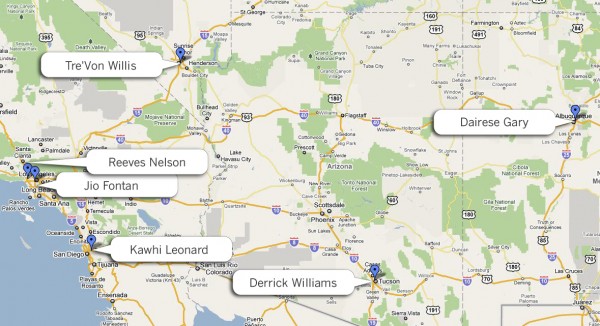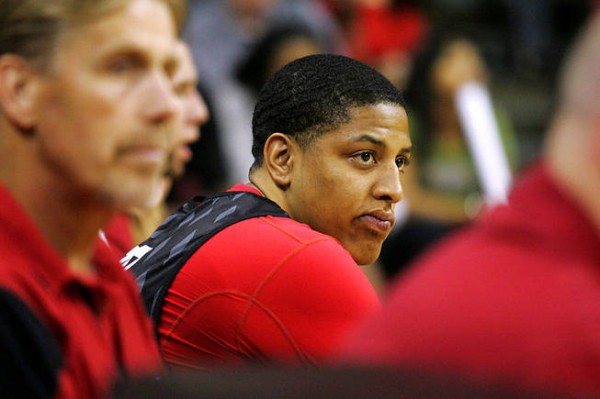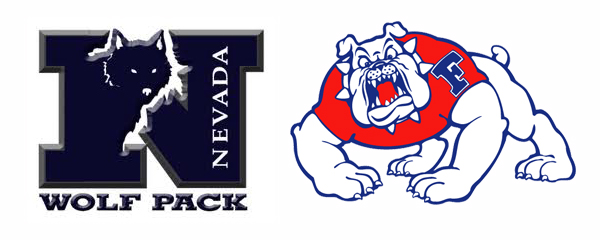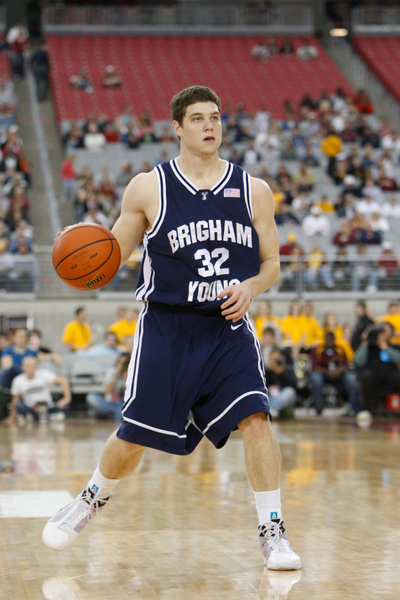
Sam Wasson, Co-Founder and Editor of bleedCrimson.net covering New Mexico State athletics, and Kevin McCarthy, Founder of Parsing The WAC, are the RTC correspondents for the WAC.
[ed note: this WAC Check-In does not include Wednesday’s games]
A Look Back
The WAC went 12-5 against their schedule over the past week picking up wins over Pacific and Oregon along the way. New Mexico State‘s win over Pacific and Idaho‘s win over Oregon represent two of the better RPI-based wins this season by the WAC and the league moved up one spot in the RPI rankings from 19th to 18th.
Player of the Week. Louisiana Tech’s Olu Ashaolu was named the Player of the Week for the week of Dec. 13-19. Ashaolu, a junior forward, recorded back-to-back double-doubles for the third time this season in a pair of Bulldog wins. He scored 21 points on 10-of-13 shooting and grabbed 13 rebounds in an 80-57 win at Houston Baptist. He then recorded 12 points and 10 rebounds in a 62-61 win at UT-Arlington. Ashaolu averaged 16.5 points, 11.5 rebounds, 2.0 blocks and 1.5 assists per game for the two-game stretch and shot 68.4 percent (13-of-19) from the field and 75.0 percent (6-of-8) from the free throw line.
Power Rankings
1. Utah State (9-2)
Up Next: 12/22 vs. Western Michigan, 12/23 vs. Troy
Utah State had no trouble with Utah Valley or Idaho State and improved to 9-2 on the season. The UtAgs got 19 points from Brockeith Pane in the victory over Utah Valley and 17 points from Brian Green in the victory over Idaho State in the opener of the World Vision Invitational in Logan, UT. Head coach Stew Morrill cannot be pleased that his Aggies allowed the Bengals to shoot 58.8 percent in the second half, however, shooting 61.1 percent yourselves eases the pain a little. USU will face Western Michigan and Troy to wrap up the Invitational. The Broncos from WMU and the Trojans from Troy did battle in a 102-99 overtime shootout. With Utah State’s defensive struggles against Idaho State in the second half, one has to wonder if either WMU or Troy can do the unthinkable and knock off USU in their own building.
2. Hawai’i (7-2)
Up Next: 12/22 vs. Florida State, 12/23-12/24 vs. TB
Victories versus Hawaii Pacific and Chicago State (on Maui) have righted the team after consecutive losses to Cal Poly and then BYU. Now it’s the Diamond Head Classic, starting out with Florida State and Baylor, Butler, Utah and San Diego rounding out the field. Hawaii is undefeated at home so far this season. Four Warriors are scoring in double figures: Zane Johnson at 12.6 PPG, Joston Thomas at 12.1 PPG, Hiram Thompson at 12.0 PPG and Bo Barnes at 10.1 PPG. Thompson was injured last game — his status is unknown — further depleting the depth at guard after the departures of Anthony Salter and Jordan Coleman. Forward Bill Amis (15.8 PPG) remains on the sidelines but various reports indicate he will see some action very soon.
3. Louisiana Tech (8-4)
Up Next: 12/29 vs. Boise State
The Bulldogs split a pair last week notching a one-point victory over UT-Arlington before losing to Iowa in Iowa City 77-58. The Bulldogs were within one at halftime against the Hawkeyes but a late second half surge by the home team made the final margin a little wider than the contest had actually been. After shooting a perfect 10-of-10 from the free throw line in the first half, La Tech was awarded just four foul shots in the second half and hit just one. Olu Ashaolu continued his strong play with 18 points and 11 rebounds before fouling out. The Bulldogs’ next game will be their home conference opener against Boise State.
4. San Jose State (7-3)
Up Next: 12/22 vs. University of Puget Sound, 12/29 at Fresno State
After falling at the end to crosstown rival Santa Clara, SJSU hosted and beat Eastern Washington (for the second time this season) and then put a pasting on Seattle up in the Emerald City. Puget Sounds comes to town Wednesday for what should be an easy one for the Spartans. One interesting factoid: the Spartans are 4-2 on the road in 2010. San Jose State is still surprisingly still below 40% in team shooting (.394). Senior Justin Graham is all the way back physically, shooting 49% overall and 57% on threes while also topping the team in assists.
5. Boise State (7-4)
Up Next: 23/33 at Portland, 12/29 vs. Louisiana Tech
The Broncos put up a fight at Utah but came up disappointingly short, a two point loss at the Huntsman Center. The disappointing part for the Broncos is that not only was it their fourth consecutive loss but they held an eight point lead at the break despite 51.7 percent shooting by the Utes in the first 20 minutes (the Broncos countered with 51.3 percent shooting in the half) and and nine point lead with just under five minutes left to play. Utah still wielded a hot hand in the second half shooting 53.6 percent while making 6-of-11 threes and 10-of-12 free throws. The Broncos led by one with 22 seconds left after a layup by La’Shard Anderson but a three from Utah’s Will Clyburn with 11 seconds left was followed by a three point miss by the Broncos’ Westly Perryman sealing the loss. The Broncos took out their frustration on UT-Pan American winning 91-62 but the second half defensive struggles for the Broncos continued as UTPA shot 63.6 percent in the second stanza. The Broncos travel to Portland and then open up conference play versus Louisiana Tech.
6. Idaho (6-5)
Up Next: 12/29 vs. New Mexico State
The Vandals nearly extracted revenge against Montana for an early season embarrassment but came up just short falling 64-63. The teams were tied at halftime but the lead went back and forth in the second half with Idaho holding a pair of four and five point leads while Montana tried to pull away late going up by five with 1:14 left to play. Idaho would put on a furious rally and took the lead 63-62 on a jumper from Shawn Henderson but Montana’s Derek Slevig would break the Vandals’ hearts with a jumper with six seconds left to send Idaho to a 64-63 loss. Idaho bounced back by notching the second WAC victory over Oregon this season winning 69-65 (SJSU authored the other Duck killing). The Vandals led by five at the break and trailed just once in the second half, by one point. Idaho got the ultimate in balanced scoring as seven players finished with at least eight points. The Vandals are off until next week when they host NM State in the conference opener.
7. New Mexico State (6-7)
Up Next: 12/23 vs. St. Mary’s, 12/29 at Idaho
The Aggies currently own the league’s longest winning streak (four) which comes immediately after owning the league’s longest losing streak (seven). The Aggies easily handled a couple of lower level schools (Oklahoma Panhandle State and Arkansas-Pine Bluff) but got their best win of the season to-date with a 69-64 victory over Pacific. The Aggies trailed by five at the break but rallied to take the lead with 15:17 remaining and did not trail the rest of the way. Senior guard Gordo Castillo finished with 17 points to lead all scorers. The Aggies added to the win streak by holding off a pesky Louisiana squad 82-76. NM State led by as many as 10 in the first half but went into the break with just a one-point lead. They led by as many as 11 in the second half but needed a late bucket and defensive stop to seal the win. Up next the Aggies host St. Mary’s on Thursday. The Aggies will need their most complete effort of the season if they are to come away with the win over the Gaels. The Aggies lost 100-68 in the season opener last year while playing without Wendell McKines and Troy Gillenwater which they will be doing again this time around. Hamidu Rahman will also miss the game but the Aggies did receive a bit of good news as McKines is said to be participating in his first walkthrough practice since breaking his foot.
7. Fresno State (4-6)
Up Next: 12/29 vs. San Jose State
“Home Sweet Home” is the Bulldog mantra of late what with three consecutive Save Mart Center wins over San Diego, Pepperdine and North Dakota State respectively prior to a 65-55 home loss to Pacific. The Bulldogs are off until they start WAC play at home next week: San Jose State then a trip to Nevada. Greg Smith‘s 20 points led to the victory over USD, 15 steals paced Fresno State to the victory over the Waves and a pair of unexpected double-doubles supplied by Nedeljko Golubovic and Bracken Funk sent the Bison (shouldn’t it be the Woodchippers?) back to Fargo. Fresno State is 3-2 at home but just 1-4 away. Smith still leads the Bulldogs in scoring (10.5 PPG) and rebounding (6.8 RPG) but a double-double average is the expectation of him this season. Better outside-shooting from his teammates (currently a collective 25% three-point percentage) will provide more room for Smith to operate but stronger internal motivation is needed from the sophomore.
9. Nevada (3-8)
Up Next: 12/22 at Washington, 12/27 at Portland
The Wolf Pack head to the road to complete non-conference play as they’ll face Washington and Portland. The Pack narrowly lost to Arizona State (78-75) as Olek Czyz made his Wolf Pack debut with 10 points and seven boards and a monster putback dunk in the second half. Nevada followed the loss with a 79-73 victory over Portland State. Malik Story finished with 20 points and six boards as the Pack fought back from a three point deficit late in the second half to pull away with the win.
A Look Ahead
Conference play begins next week but a few teams still have non-conference games to finish up. The sternest test will come on the island of O’ahu as Hawai’i hosts the Diamond Head Classic with Butler, Baylor and Florida State among the participants. New Mexico State hosts St. Mary’s, Nevada travels to Washington and Portland while Boise State also makes the journey to Portland.
